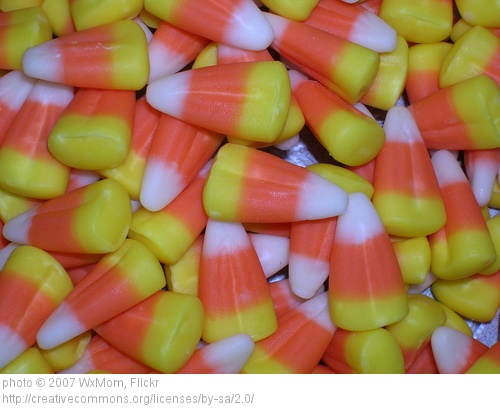This is an updated version of a piece originally published as an op ed in the Hartford Courant in October 2008. As the voices clamoring for the annual theft of Halloween candy from kids grow louder and more self-righteous, I decided to dust this off and run it again. I was emboldened by the New York Times’s ethicist, who responded last week to a reader’s question about whether it is ethical for dentists to collect Halloween candy and then donate it to local food pantries, where it will likely go to families who struggle to afford healthy food. The ethicist opened his response with this: “Let me start by noting I don’t like any part of this. I realize candy isn’t nutritious, but it’s not crystal meth. It’s not as if Halloween happens four times a month. I don’t think letting children eat a bunch of candy once a year is any level of tragedy, and I don’t like the idea of kids viewing Halloween as just another way to make money.” Preach it, Brother Ethicist. Also, I realize that some Christian families don’t celebrate Halloween at all, while others are concerned about the global economics of chocolate and only buy fairly sourced cocoa. My post doesn’t address these topics. It’s simply about letting the kids keep the candy.
It’s that time again — time for pumpkins to appear on doorsteps, children to dream up the perfect costume, and parents to scheme about how to take their kids’ candy away within hours of the jack-o’-lanterns’ going dark on October 31. Easter and Valentine’s Day, alongside Halloween, are holidays that provoke candy anxiety among parents worried about obesity and tooth decay. Some parents scheme to replace the edible loot with some other kind of loot: They give out cheap little toys (or pretzels, which are not exactly health food) instead of candy to trick-or-treaters. They create rituals involving the Great Pumpkin or the Sugar Witch, who appear after Halloween to relieve kids of their candy. In return, these imaginary candy thieves leave a small toy. Dental offices offer to buy kids’ candy for $1 a pound.
Extreme candyphobia goes beyond holidays. Some schools have a zero-tolerance policy on candy. A friend’s daughter came home from kindergarten in tears after being chastised because her mom included a Hershey’s kiss in her lunch.
This demonization of candy does nothing to make kids healthier or teach them about reasonable indulgence.
There is something just plain stingy, even a little mean, about taking candy from children. Does no one remember the thrill of having a pile of Halloween candy, knowing that it was all yours to sort and savor as you wished? Cultures worldwide celebrate holidays with foods that are inappropriate for every day, because of their expense, difficult preparation or poor nutrition. On Thanksgiving, we pile our plates with turkey and side dishes, slather it with gravy and butter and end the meal with two or three kinds of pie. Even people who usually count fat grams and calories indulge in this over-the-top meal because they understand it’s a once-a-year celebration, not a way of life.
 I am much less concerned about my three children eating too much candy on special occasions than I am about the explosion of stuff in their lives and the expectation that every party requires a goody bag of cheap toys. So the last things I want my kids to have more of are the little tokens, in place of candy, that have become part of every celebration. Many of these trinkets are useless—the plastic spider rings don’t fit small fingers, the cute erasers don’t actually erase, the bouncy balls are confiscated so toddler siblings and family dogs don’t swallow them. And although stuffed animals and toy cars have some long-term play appeal, my kids have plenty of them. I’d rather have a bunch of candy that will be gone in a few weeks than more small toys that end up forgotten.
I am much less concerned about my three children eating too much candy on special occasions than I am about the explosion of stuff in their lives and the expectation that every party requires a goody bag of cheap toys. So the last things I want my kids to have more of are the little tokens, in place of candy, that have become part of every celebration. Many of these trinkets are useless—the plastic spider rings don’t fit small fingers, the cute erasers don’t actually erase, the bouncy balls are confiscated so toddler siblings and family dogs don’t swallow them. And although stuffed animals and toy cars have some long-term play appeal, my kids have plenty of them. I’d rather have a bunch of candy that will be gone in a few weeks than more small toys that end up forgotten.
Our rules for holiday candy are simple. On the holiday, the children can eat as much as they want. (This includes jelly beans, which I consider a food group of their own, at breakfast on Easter morning.) After that, it goes into a kitchen cabinet and they can choose one piece for dessert after meals. At first, they can’t wait for dessert and plot which candy they will choose. After a week or so, they occasionally skip dessert. Within a few weeks, I pack up what’s left and either throw it away or send it to my husband’s office. The kids don’t even realize it’s gone. My children not only get to keep their Halloween candy, but also learn to pace themselves. It doesn’t take them long to realize that one or two mini Hershey bars are delicious, while three Hershey bars followed by some gummy Life Savers and a lollipop just make you feel sick.
My kids love candy, just as they love peaches and raspberries, applesauce made with fruit they picked themselves and a really cold glass of (skim) milk with a chocolate chip cookie. Holiday candy has not ruined their eating habits or their health. They are neither obese nor diabetic. Among the three of them, only one has had a barely-there dental cavity. (And I, who have been known to eat an entire bag of jelly beans on my own, have never had any cavities.) The kids have been introduced to legumes and greens, winter squash and whole grains. One of the meals that I regularly serve, assured that everyone will devour it, is steamed vegetable potstickers with brown rice and assorted raw veggies and fruit on the side—although they love macaroni and cheese from a box too.
This Halloween night, I’ll watch my kids dump their candy on the floor, sort it by type and then carefully choose which kind to eat first. Instead of fussing about how soon I can get that candy out of their hands, I’ll forage through our trick-or-treat leftovers, trying to figure out whether I like Reese’s peanut butter cups or Kit Kats better, and realize I need to try just one more of each before making my final decision.











